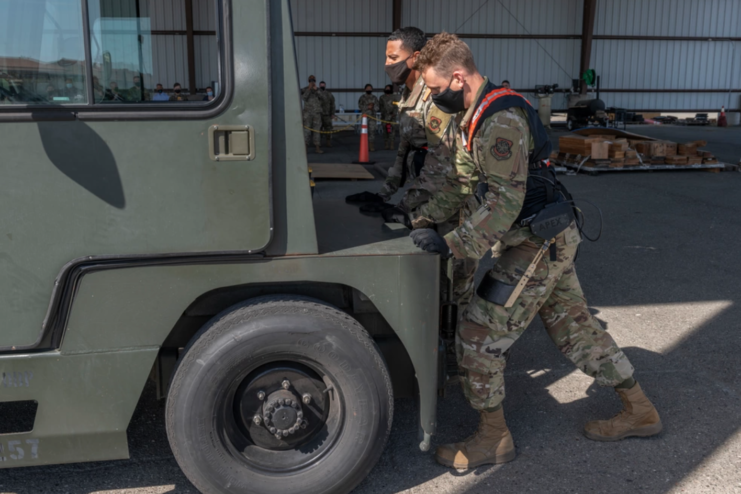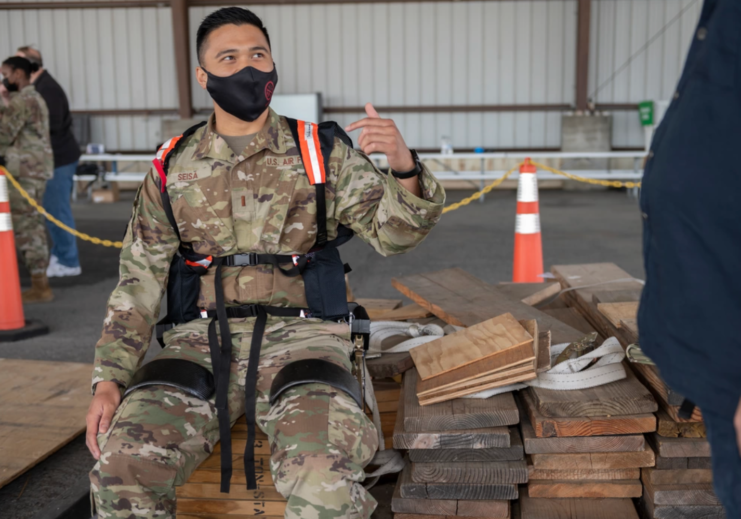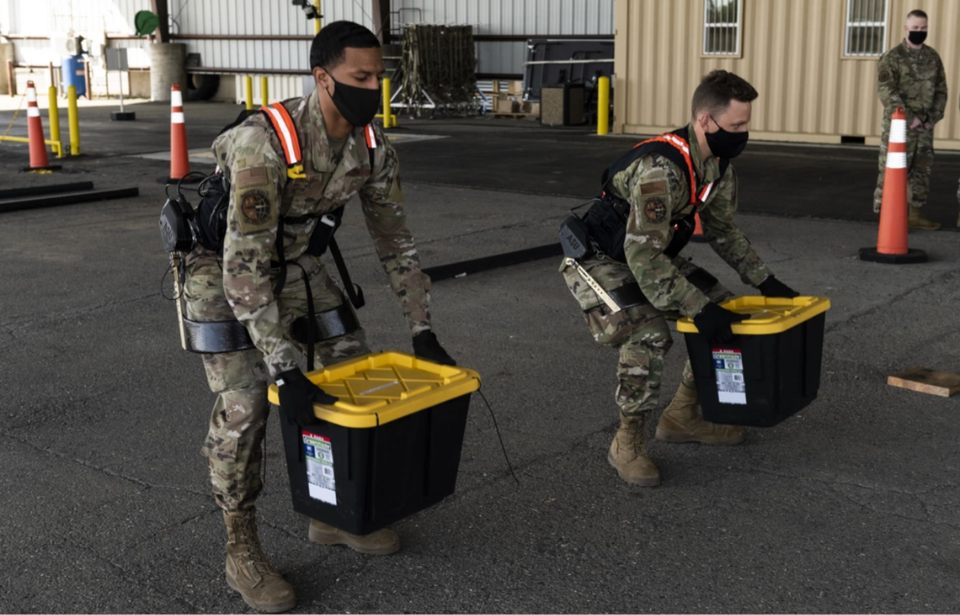Travis Air Force Base, California is the test site for a new futuristic exoskeleton that aims to reduce injuries and make the work of service members easier. Porters – those who carry, load and offload cargo and equipment – are the intended recipients of the exoskeletons, as they’re subject to injury due to the nature of their work, and often leave the service with long-term health issues. The load-bearing assistance is called the Aerial Porter Exoskeleton.
Why are exoskeletons needed?

The motivation for the Aerial Porter Exoskeleton came from a 2019 study that investigated why so many retired porters were in need of disability benefits.
Tech. Sgt. Landon Jensen, the innovation, systems and future command manager of the Air Mobility Command, said, “We began looking into this equipment because of the outcome of the 2019 Volpe study,” adding that it “focused on why retired aerial porters alone were costing upwards of $31 million a year on disability benefits.”
The study concluded that porters were frequently injured, so a solution was required to reduce these injuries. This resulted in the development of the Aerial Porter Exoskeleton, which came from a joint-effort between the Air Mobility Command, the Air Force Life Cycle Management Center and Arizona State University.
“This project would have been impossible without the help of Arizona State University,” said Air Force Life Cycle Management Center program manager, 2nd Lt. Aaron Cox. “They focused on the development and manufacturing of the exoskeleton, and without their partnership, we wouldn’t have been able to develop this technology.”
The suits can help a person pick up objects and take away some of the strain. Without any assistance, this can lead to long-term injuries over time. The system has been put through early testing by service members at Travis Air Force Base, and, so far, the results are promising, with airmen reportedly finding their work significantly easier.
“This suit’s core function is to help us lift, but can also be used in other ways,” said Airman 1st Class Kyle Sunderman of the 60th Aerial Porter Squadron. “During a load, fatigue can be a real issue, and these exoskeletons really take a lot of the strain away.”
“There are small things here and there where the suits can be improved to make them more user-friendly,” added Airman 1st Class Xaviar Archangel. “But there is no danger and these suits don’t have the strength to overpower the user, so I feel completely safe in it.”
Thanks to the Aerial Porter Exoskeleton’s lightweight material and construction, users have reported that they’re able to wear them for long periods of time without issues. “These suits are pretty light,” Archangel shared. “You hardly notice you are wearing them aside from the bulk around the waist. But other than that, I could honestly wear these for an extended period with no problems if necessary.”
Aerial Porter Exoskeleton

The exoskeleton itself isn’t a new idea. The concept has been explored for decades, and has remained popular in media and sci-fi films. However, the suits have only reached a level of practicability in recent years. Making an exoskeleton that can perfectly assist the complex movements of the human body is hard, and doing so with a portable power supply is even more difficult.
A notable prior attempt was the Hardiman suit, developed by General Electric and the US military in the 1960s and ’70s. It was designed to enable the user to lift 680 kgs, but it also weighed that amount. It was extremely primitive, and its movements were so jerky and aggressive that it was never used with a real human operator.
The Hardiman suit was slow, impractical and dangerous, and the project was unsuccessful. There have been many more attempts since then, with varying degrees of success.
More from us: World’s First Modern Submarine HMS D1 Identified In the English Channel
The Aerial Porter Exoskeleton is much less about lifting large amounts of weight, and more about slightly assisting and amplifying a human’s abilities. It’s worn as part of the operator’s uniform, and is constructed from metal and lightweight composite. Arizona State University’s IDEAlab says the exoskeleton is “a wearable hybrid robotic system that assists, enhances, and augments a person in their daily activities around the home and in the workplace.”
